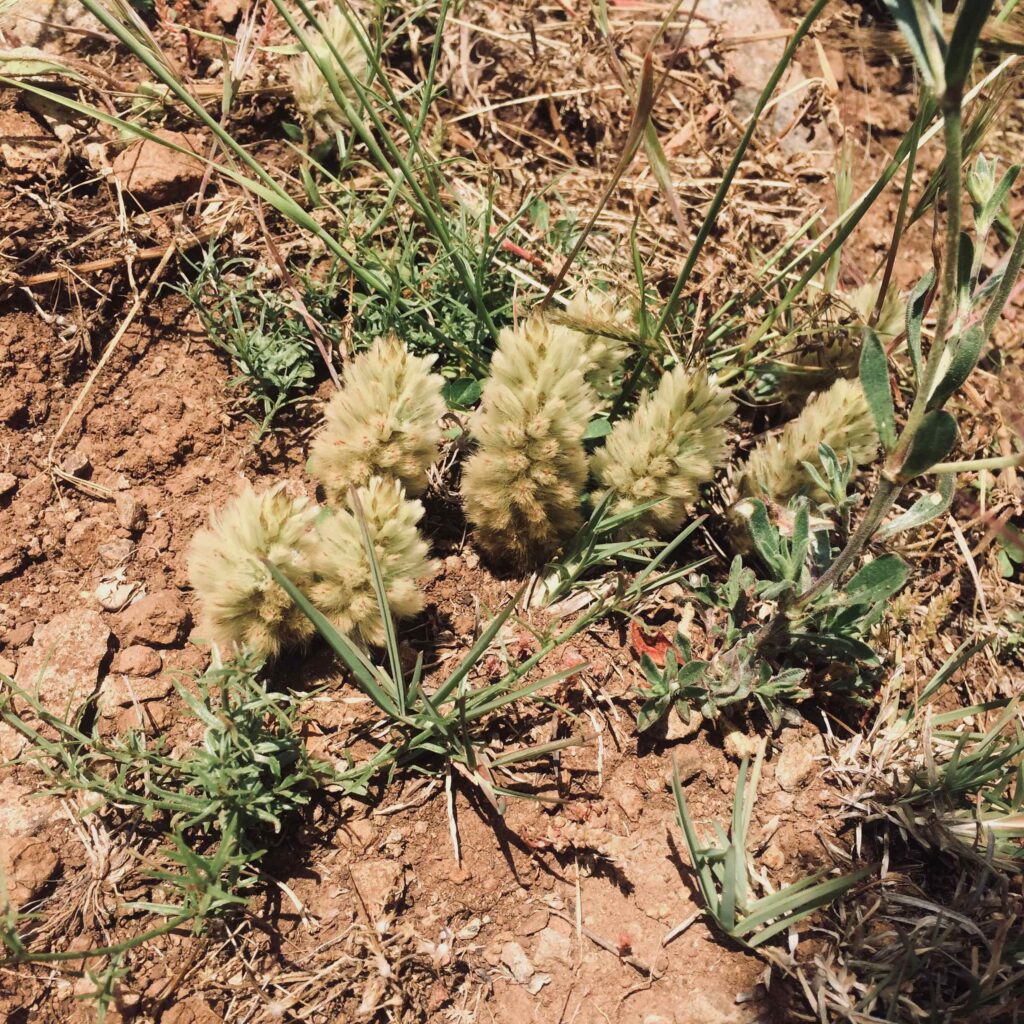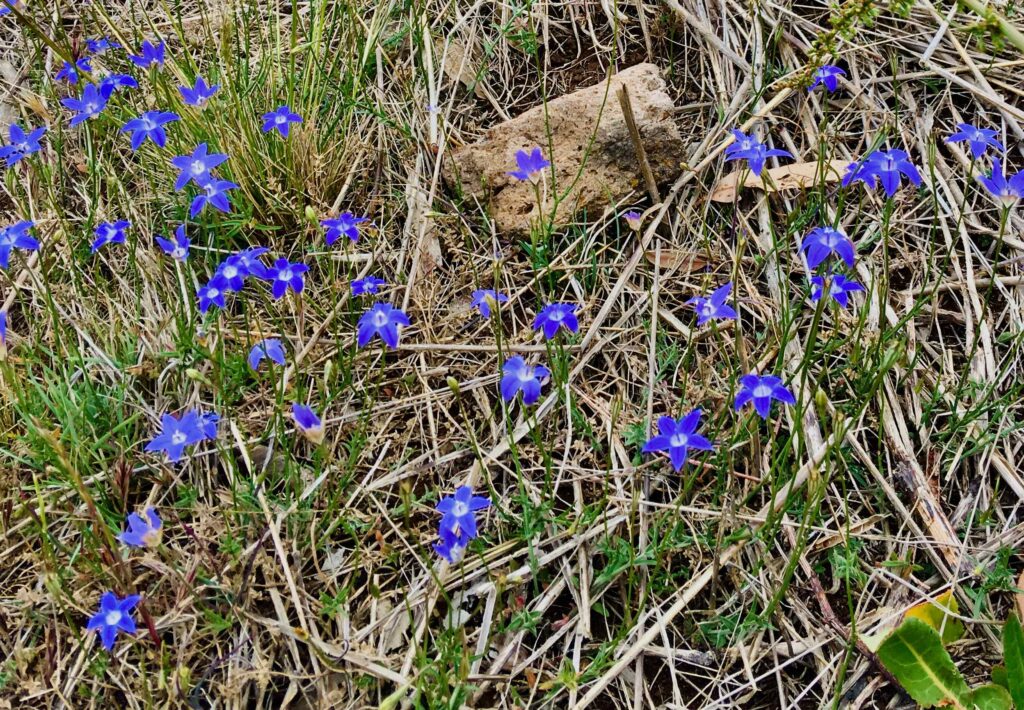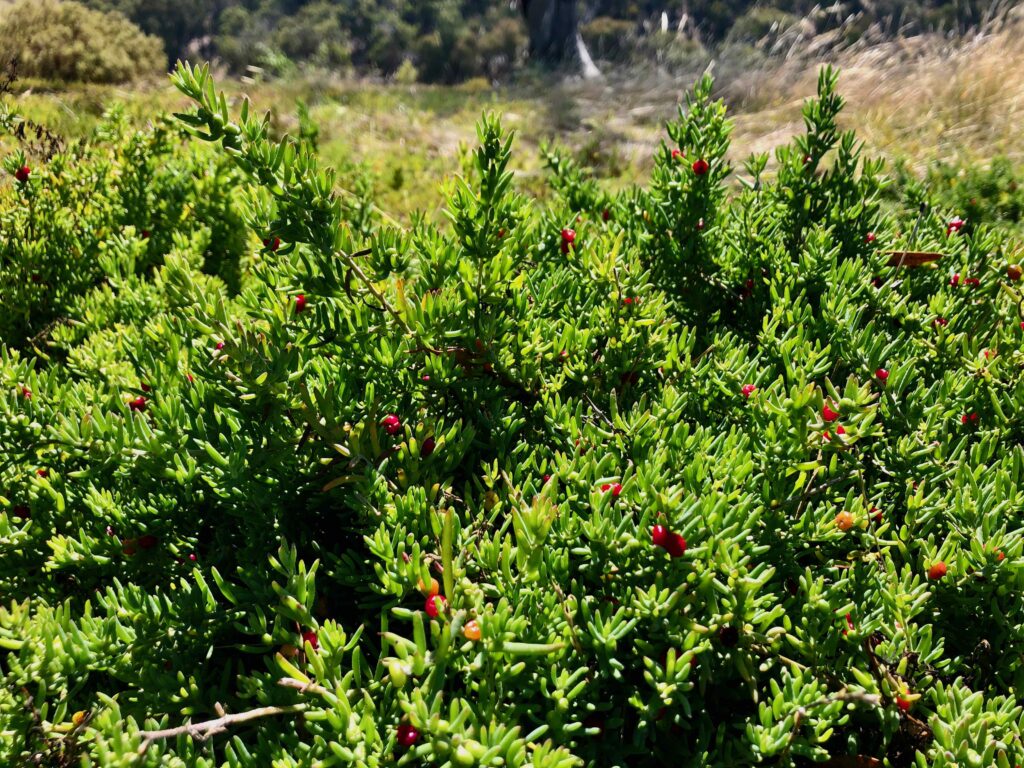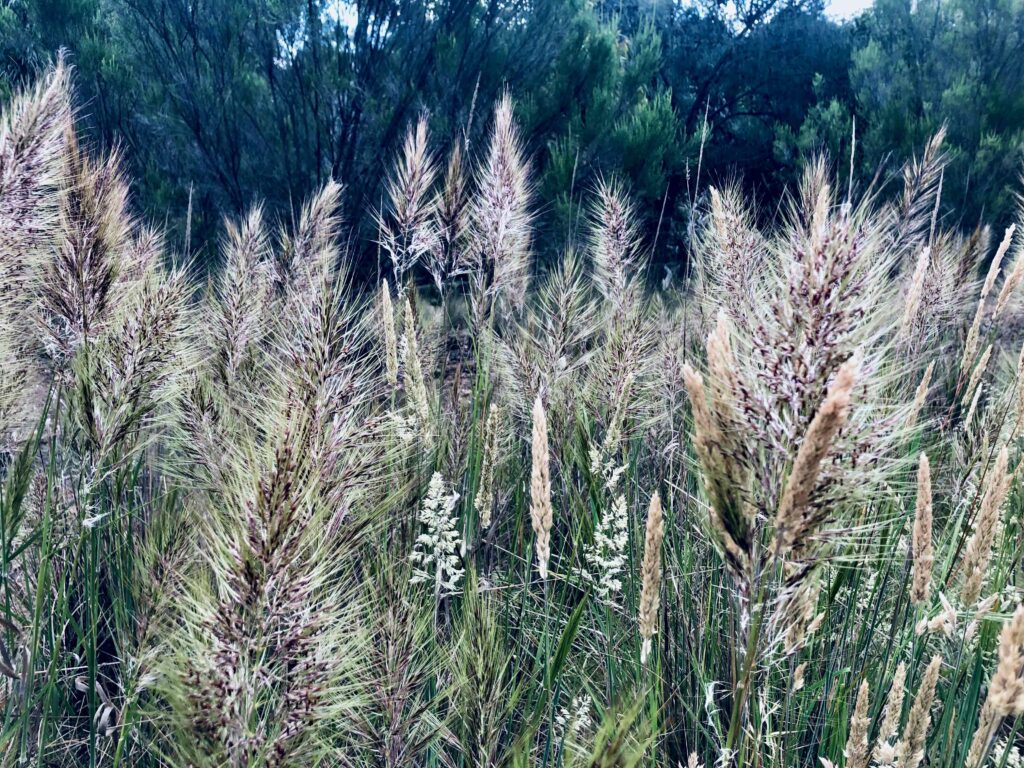Flora
The array of indigenous grasses in the valley is astonishing. They are diverse in appearance, ranging from the bold yet gentle spires of spear grass, to the succulent-like leaves of ruby saltbush, and the soft seed heads of Wallaby Grass which rustle and murmur as the wind moves over the paddocks. If we spot a rare species like Ptilotus or a Chocolate Lily on our evening walks, we make a note of its location and protect it from cattle and kangaroos. Our valley is largely degraded and overrun with invasive species such as Chilean Needle Grass and Serrated Tussock. So protecting individual plants and encouraging them to propagate is imperative! This area was once grassy woodland, with old Yellow Box, Grey Box and Ironbark scattered throughout. Some of these trees pre-date European settlement. The property has many rare Bacchus Marsh Varnish Wattles and other small native shrubs and medium story trees.

Ptilotus spathulatus (Pussy tails) 
Bluebell variety 
Carpobrotus glaucescens (Pigface)

Enchylaena tomentosa (ruby saltbush) 
Rytidosperma caespitosum (Wallaby grass) 
Austrostipa mollis (Soft speargrass)
Fauna
Iron Bark House is home to an abundant variety of microfauna, including rare Golden-Sun Moth, several dung beetles, stick insects and skinks. We share the property with many native snakes (we steer well clear of each other!), blue-tongue lizards, lace monitors, echidnas, wombats and kangaroos. Many of these animals venture to our property from the neighbouring state park, using the biolinks we have created through shelterbelt plantings. A range of birdlife inhabits the property, including larger Wedge-tail Eagles, falcons and kites who soar on wind currents above the valley. Tawny Frogmouth call through the night and Yellow-tailed black cockatoos are raucous during the day. The smaller native birds are whirls of colour as they feed on the nectar from our sweet bursaria and Bacchus Marsh varnish wattles. They also make their homes in the shelter belts. We leave fallen trees and limbs on the ground to provide habitat for the local phascogales and bats.

Unknown species

Wedge-tailed Eagles

Dung beetle activity







